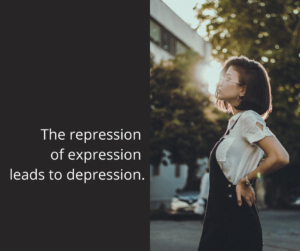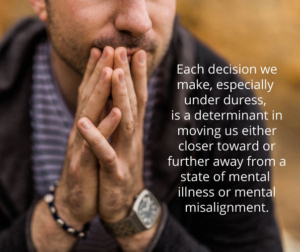Opening New Doors: Developing Interpersonal Communication Skills
Interpersonal communication skills, when strengthened, can help you express your feelings clearly and precisely. You can use these lifelong skills to move further up the career ladder, express yourself to your spouse or children, make new friends, and network with people who can help your cause.
The good news is that most people are not born with good communication skills. It’s a skill you can begin mastering today to effectively and assertively convey what you mean.
The Different Types of Communication
 There are several different types of communication, but they all boil down to verbal, nonverbal (actions), written, and visual. These skills also referred to as people skills, can take you far.
There are several different types of communication, but they all boil down to verbal, nonverbal (actions), written, and visual. These skills also referred to as people skills, can take you far.
Unfortunately, some people find it difficult to communicate with people and allow others to control and manipulate them. By learning it’s okay to speak up (and how to do so constructively), you can develop self-confidence.
The types of communication are:
Verbal – Verbal communication uses spoken language to convey meaning to others.
Nonverbal (actions) – Nonverbal communication includes nodding, shaking your head, and other actions such as crossing your arms over your chest (body language), facial expressions, or slamming doors when angry.
Written – Written communication includes books, letters, emails, newspapers, text messages, and other printed or digital words.
Visual – Visual communication concentrates on the things we can see and understand as an outlet in expressing feelings and thoughts. This includes artwork, graphs, charts, drawings, and pictures.
 Some people learn better when several of these types of communication are combined. For example, you might be more comfortable learning new information using written and visual materials. And it might be easier for you to express your thoughts of very detailed, personal matters through written material (a journal) rather than talking (verbal communication) with someone.
Some people learn better when several of these types of communication are combined. For example, you might be more comfortable learning new information using written and visual materials. And it might be easier for you to express your thoughts of very detailed, personal matters through written material (a journal) rather than talking (verbal communication) with someone.
Another type of communication frequently forgotten, but possibly the most important skill is active listening. Active listening is trying to not only hear the person but to understand them. This means not losing your focus to distractions or thinking about how you are going to respond to their comments. While active listening, you nod or shake your head, speak when necessary, and show empathy.
Developing Interpersonal Communication Skills
Perhaps you do well with one or two public communication skills but are sorely lacking in the others. You can learn how to develop good communication skills with a little practice. You can begin by implementing a few of the suggestions listed below.
If you are interested in learning more about how to strengthen your communication skills, you can find printed books and eBooks on the subject as well as courses that cover interpersonal and public communication.
How to Develop Active Listening Skills
Developing the ability to actively listen to someone requires you to focus solely on the person speaking. If the person is sharing an emotional story with you, be sure to respond as necessary with kindness and empathy. This is not the time to judge the person in front of you, but to try to understand what they are going through or the instructions they are giving you.
Sometimes it’s easy to get caught up on our responses to the other person that we simply stop actively listening. Take your time in your response if you need to. You want the other person to feel important and heard.
How to Develop Verbal Communication Skills
To truly improve your verbal skills, you should expose yourself to a wide range of vocabulary. Read books (both printed and eBooks) in various genres as well as nonfiction. Consider joining a book club to discuss insights on a book to improve critical thinking skills or join a debate team to pick up how to form an argumentative opinion.
Speak precisely and with confidence. It is not necessary to bog down a conversation with five-syllable words as most people will come away from the exchange either intimidated or bored.
If you are nervous about meeting a new acquaintance, approach the person with a kind smile, compliment them, and ask questions. People love to talk about themselves and what is important to them. Start with asking about their family, career, hobbies and interests, and what they want to do with their life. As people confide, they will begin to trust you because you care to know about them.
How to Develop Nonverbal Communication Skills
Whether you realize it or not, you are constantly giving away your thoughts and feelings with body language and facial expressions. For example, crossing your arms over your chest while talking to someone is considered a defensive move for protection. Do you feel threatened by what they are saying? Do you find their comments hurtful?
Strive to be mindful of your facial expressions and posture when you are talking to someone. Smiling and maintaining a relaxed and open posture will translate to others that you are a warm and friendly person with whom they can spend time conversing.
How to Develop Written Communication Skills
 The written word surrounds us daily with billboards, newspapers, chat messages, text messages, and emails. How many emails and texts do you send daily? It is important to improve your writing skills, so you convey the correct meaning and induce the appropriate response.
The written word surrounds us daily with billboards, newspapers, chat messages, text messages, and emails. How many emails and texts do you send daily? It is important to improve your writing skills, so you convey the correct meaning and induce the appropriate response.
People today have shorter attention spans due to the constant barrage of distractions. Keep your sentences short and cut out any flowery words. Make sure you reread your material for clarity and accuracy. If writing seems awkward to you, try journaling. The act of recording your thoughts and emotions is simply the practice of communicating with yourself.
How to Develop Visual Communication Skills
You can use visual images to communicate with others. Most people remember pictures and videos even if they don’t remember the words they read. You can use visuals to help you remember important things.
For example, a student might draw a diagram, breaking down a difficult topic for a class. Or, a mother might create a chores graph for her children to use to make the daily tasks fun.
If you want to express your beliefs and thoughts to others using social media, you can create videos or pictures. You might find it easier to record and edit a video of you talking than speaking in-person to a group of people.
Social Communication Disorder
A child who cannot seem to express himself with the appropriate verbal and nonverbal cues may be tested by their pediatrician for Autism Spectrum Disorder (ASD). If autism is ruled out, the physician may diagnose the child with Social Communication Disorder (SCD).
Children demonstrating signs of SCD may have trouble responding appropriately to others, misjudging when to take their turn speaking, expressing their feelings verbally, and using language to ask questions and hold conversations.
 Children with Social Communication Disorder may also have another mental health condition that requires therapy. Speak with your child’s pediatrician about adding the professional services of a speech-language pathologist, either at school or home. Some states provide programs, such as “Birth to 3,” to help babies and toddlers to overcome speech disorders and delays.
Children with Social Communication Disorder may also have another mental health condition that requires therapy. Speak with your child’s pediatrician about adding the professional services of a speech-language pathologist, either at school or home. Some states provide programs, such as “Birth to 3,” to help babies and toddlers to overcome speech disorders and delays.
There are things you can do to help your child improve his communication skills. Make reading a priority in your home. Not only will your child enlarge his vocabulary, but he will learn to think critically and form opinions.
When possible, combine written and visual materials to teach your child about important topics. Many children are visual learners and can pick up a subject quicker with images.
Arrange for your child to spend time with other children and help him get started with conversations by asking questions. Once he sees that he has common interests as the other children, it may be easier for him to hold the conversation.
One Final Word
Communication skills are vital in every area of life. Whether you speak to a room full of peers, work behind a desk answering phones and sending emails, or need to assert your self-worth, mastering the skills to effectively communicate will serve you for the rest of your life. It’s a skill that no one can take from you.
“Admiring the View”, Courtesy of Priscilla Du Preez, Unsplash.com, CC0 License; “Phone Call”, Courtesy of Kevin Laminto, Unsplash.com, CC0 License; “Chatting”, Courtesy of Charles Deluvio, Unsplash.com, CC0 License; “Happy”, Courtesy of Priscilla Du Preez, Unsplash.com, CC0 License

 Resilience after a rejection is not a trait only some people are blessed with. Dealing with rejection is a behavior that you can learn. It is how you identify and analyze your thoughts and emotions after rejection. It is learning how to use that hurt to mold and create your purpose by shifting your perspective.
Resilience after a rejection is not a trait only some people are blessed with. Dealing with rejection is a behavior that you can learn. It is how you identify and analyze your thoughts and emotions after rejection. It is learning how to use that hurt to mold and create your purpose by shifting your perspective. speak or acknowledge your presence. They may feel overwhelmed at work and take a quick break to scroll social media and inadvertently skip “liking” your post. Or, perhaps they are trying to manage all the small details for a social gathering and forget to personally invite you.
speak or acknowledge your presence. They may feel overwhelmed at work and take a quick break to scroll social media and inadvertently skip “liking” your post. Or, perhaps they are trying to manage all the small details for a social gathering and forget to personally invite you. Keeping the pain from rejection bottled up inside however is unhealthy and can lead to other long-term problems. You can feel the hurt, just don’t get lost in it. You don’t want the emotions to override your controlled behavior. Under the initial sadness, anger, or resentment of rejection is the hurt that needs to be addressed.
Keeping the pain from rejection bottled up inside however is unhealthy and can lead to other long-term problems. You can feel the hurt, just don’t get lost in it. You don’t want the emotions to override your controlled behavior. Under the initial sadness, anger, or resentment of rejection is the hurt that needs to be addressed. Allowing a situation to take the forefront in your mind can also exacerbate the pain and emotions toward the person or people involved. Anger, bitterness, and resentment can grow exponentially. The problem with allowing these emotions to grow is that they end up hurting you.
Allowing a situation to take the forefront in your mind can also exacerbate the pain and emotions toward the person or people involved. Anger, bitterness, and resentment can grow exponentially. The problem with allowing these emotions to grow is that they end up hurting you.
 Fear can be attached to reasons for withdrawal. Many people who withdraw live in dread of getting hurt so badly again. Though the real threat of danger may have passed, the trauma from the original incident runs deep. The fear of getting hurt again can drive the urge to withdraw.
Fear can be attached to reasons for withdrawal. Many people who withdraw live in dread of getting hurt so badly again. Though the real threat of danger may have passed, the trauma from the original incident runs deep. The fear of getting hurt again can drive the urge to withdraw. Emotional withdrawal symptoms can last for a few weeks after a trigger incident. If not handled right away, these symptoms can persist for months or even years. You need help to deal with these symptoms, so they don’t exact a heavy toll on your physical and mental well-being.
Emotional withdrawal symptoms can last for a few weeks after a trigger incident. If not handled right away, these symptoms can persist for months or even years. You need help to deal with these symptoms, so they don’t exact a heavy toll on your physical and mental well-being. The boy who was bullied gains some boundary-setting skills with his counselor. He learns to view his classmates as not “all bad” any longer. By taking a few calculated risks, practiced with his counselor, he connects with one child in the class and begins building a friendship.
The boy who was bullied gains some boundary-setting skills with his counselor. He learns to view his classmates as not “all bad” any longer. By taking a few calculated risks, practiced with his counselor, he connects with one child in the class and begins building a friendship. The APA Dictionary of Psychology defines passivity as “a form of adaptation, or maladaptation, in which the individual adopts a pattern of submissiveness, dependence, and retreat into inaction.”
The APA Dictionary of Psychology defines passivity as “a form of adaptation, or maladaptation, in which the individual adopts a pattern of submissiveness, dependence, and retreat into inaction.” We can look to the Bible for examples of how passivity cost people tremendous amounts of heartache and loss. One clear example is Jacob, son of Isaac and Rebekah, as we read in Genesis 25-28. Though his brother Esau was the heir to their father’s inheritance, Jacob passively allowed his mother to manipulate the situation so he would receive the blessing.
We can look to the Bible for examples of how passivity cost people tremendous amounts of heartache and loss. One clear example is Jacob, son of Isaac and Rebekah, as we read in Genesis 25-28. Though his brother Esau was the heir to their father’s inheritance, Jacob passively allowed his mother to manipulate the situation so he would receive the blessing. Emotionally, passivity can exact a heavy toll. You may feel weak and insecure, lacking confidence in your ability to take charge of your life. Passivity can cause anxiety, depression, anger, and other emotional disturbances.
Emotionally, passivity can exact a heavy toll. You may feel weak and insecure, lacking confidence in your ability to take charge of your life. Passivity can cause anxiety, depression, anger, and other emotional disturbances. The parents come up with a 60-day plan for holding their son accountable for finding a job and his own place. They work with a counselor to form talking points for a loving confrontation.
The parents come up with a 60-day plan for holding their son accountable for finding a job and his own place. They work with a counselor to form talking points for a loving confrontation. Underlying medical conditions (such as thyroid or hormonal issues), use or abuse of prescription medication or other substances (alcohol, marijuana, etc.), a lack of adequate nutrition (eating too much sugar or processed foods) or physical activity, and any pre-existing addictions may contribute to the development of depression.
Underlying medical conditions (such as thyroid or hormonal issues), use or abuse of prescription medication or other substances (alcohol, marijuana, etc.), a lack of adequate nutrition (eating too much sugar or processed foods) or physical activity, and any pre-existing addictions may contribute to the development of depression.

 Problematic patterns of intrapersonal relating (the way we relate to ourselves generally as well as how we respond when disappointed, hurt, or rejected) tend to be overlooked and/or misunderstood in terms of their contribution to the development of depression and other mood disorders.
Problematic patterns of intrapersonal relating (the way we relate to ourselves generally as well as how we respond when disappointed, hurt, or rejected) tend to be overlooked and/or misunderstood in terms of their contribution to the development of depression and other mood disorders.


 Fortunately, behavioral changes can be made with the right help and if the individual desires to seek such changes. Cognitive Behavioral Therapy (CBT), for example, is one method that seeks to make incremental adjustments in how the person reacts to situations, aiming for more positivity than before.
Fortunately, behavioral changes can be made with the right help and if the individual desires to seek such changes. Cognitive Behavioral Therapy (CBT), for example, is one method that seeks to make incremental adjustments in how the person reacts to situations, aiming for more positivity than before. The human brain is an amazing phenomenon. It is capable of so many incredible and complicated things, but it can also be a place of great struggle. Human beings fight battles in their minds daily. They battle cognitive distortions that can greatly impact emotions and behavior.
The human brain is an amazing phenomenon. It is capable of so many incredible and complicated things, but it can also be a place of great struggle. Human beings fight battles in their minds daily. They battle cognitive distortions that can greatly impact emotions and behavior. Control Fallacies: when someone believes the illusion of being in control of everything in their life (whether internally or externally).
Control Fallacies: when someone believes the illusion of being in control of everything in their life (whether internally or externally). Cognitive Behavioral Therapy is an evidence-based form of psychotherapy that focuses on thought patterns- what they are, how to evaluate them, and how to replace them with more accurate and helpful thoughts. The goal is for the altered thoughts to then positively affect one’s emotions and behaviors (as stated earlier about the Cognitive Triangle).
Cognitive Behavioral Therapy is an evidence-based form of psychotherapy that focuses on thought patterns- what they are, how to evaluate them, and how to replace them with more accurate and helpful thoughts. The goal is for the altered thoughts to then positively affect one’s emotions and behaviors (as stated earlier about the Cognitive Triangle). After evaluation, it is necessary to replace. This is how you can literally renew your mind. This is how to train your brain to think differently. For example, instead of allowing yourself to automatically think about getting in a car accident every time you get in your car (which leads to anxiety), you could think something like this, “Well, I do not know anything that will happen in the future. All I know is that right now, I am safe.”
After evaluation, it is necessary to replace. This is how you can literally renew your mind. This is how to train your brain to think differently. For example, instead of allowing yourself to automatically think about getting in a car accident every time you get in your car (which leads to anxiety), you could think something like this, “Well, I do not know anything that will happen in the future. All I know is that right now, I am safe.” Words can be a funny thing. Over time, their meaning can change and new words come into our vernacular. One word you might be hearing more often is “Enneagram.” For those who don’t know what it is, it might sound like a diagram. Others think it’s a medical tool, like a sonogram. Often people hear it and think it’s something scientific that doesn’t apply to them.
Words can be a funny thing. Over time, their meaning can change and new words come into our vernacular. One word you might be hearing more often is “Enneagram.” For those who don’t know what it is, it might sound like a diagram. Others think it’s a medical tool, like a sonogram. Often people hear it and think it’s something scientific that doesn’t apply to them. The exact origins of the Enneagram personality test are a mystery. It’s an ancient method for understanding human personality. This tool has been used by Christians and other religions around the world for centuries.
The exact origins of the Enneagram personality test are a mystery. It’s an ancient method for understanding human personality. This tool has been used by Christians and other religions around the world for centuries. It can be far too easy to take a personality test and never think about it again. We take the test everyone on Facebook is taking, think “hm, that’s interesting,” post our results, and never think about it again. Even with a tool this transformative, this still happens. There is an urge to find out our type without exploring it so we feel like we fit in is for all of us.
It can be far too easy to take a personality test and never think about it again. We take the test everyone on Facebook is taking, think “hm, that’s interesting,” post our results, and never think about it again. Even with a tool this transformative, this still happens. There is an urge to find out our type without exploring it so we feel like we fit in is for all of us. It seems to be especially difficult to find one’s type if someone has been through trauma, chronic stress, or other challenging situations recently. In those situations, we often lean towards a different type. It’s not at all uncommon for someone to type themselves then study more or come out a chaotic life situation to realize they were actually a different type.
It seems to be especially difficult to find one’s type if someone has been through trauma, chronic stress, or other challenging situations recently. In those situations, we often lean towards a different type. It’s not at all uncommon for someone to type themselves then study more or come out a chaotic life situation to realize they were actually a different type. We all go through times of feeling overwhelmed or overworked. Maybe you think being constantly stressed is normal. Or, maybe you feel like it’s a completely negative condition to have that sense of emotional stress.
We all go through times of feeling overwhelmed or overworked. Maybe you think being constantly stressed is normal. Or, maybe you feel like it’s a completely negative condition to have that sense of emotional stress. So, if your body reacts to significant life events with specific responses, how can you know how much stress is too much? If you’re noticing signs of stress, or if you’re going through a long season of chronic stress, what can you do to cope? Coping with difficult experiences or life changes helps us build resiliency, the ability to emotionally navigate and withstand hard circumstances.
So, if your body reacts to significant life events with specific responses, how can you know how much stress is too much? If you’re noticing signs of stress, or if you’re going through a long season of chronic stress, what can you do to cope? Coping with difficult experiences or life changes helps us build resiliency, the ability to emotionally navigate and withstand hard circumstances. But, if we are exposed to these hormones consistently for long periods of time, we will start to notice negative health effects and signs of stress, such as digestive problems, sleep problems, headaches, flare-ups in chronic conditions, etc. Mental health issues are also common with long-term stress, including depression and anxiety.
But, if we are exposed to these hormones consistently for long periods of time, we will start to notice negative health effects and signs of stress, such as digestive problems, sleep problems, headaches, flare-ups in chronic conditions, etc. Mental health issues are also common with long-term stress, including depression and anxiety. Even if you can’t eliminate the causes of your stress, there is still hope for you. There are resources that can help you live your best life even in the midst of a situation you can’t change. There are measures you can take to care for yourself in the midst of toxic or tragic situations.
Even if you can’t eliminate the causes of your stress, there is still hope for you. There are resources that can help you live your best life even in the midst of a situation you can’t change. There are measures you can take to care for yourself in the midst of toxic or tragic situations. Many people claim that they are “aware” about the use of therapy for mental illnesses. In fact, on both the big and small screens, characters are often shown visiting a therapist to assist them with their mental or emotional issues.
Many people claim that they are “aware” about the use of therapy for mental illnesses. In fact, on both the big and small screens, characters are often shown visiting a therapist to assist them with their mental or emotional issues. Therapy, however, is meant to be a venue where a person CAN share these inner thoughts, fears, and desires without being judged, ridiculed, or exposed. Professional therapists know this and approach each situation with an open mind, giving unbiased advice on what to do. As they are not personally involved, it is sometimes even easier for them to notice things that family members and friends cannot see; or share the advice that loved ones with vested interests do not want to say.
Therapy, however, is meant to be a venue where a person CAN share these inner thoughts, fears, and desires without being judged, ridiculed, or exposed. Professional therapists know this and approach each situation with an open mind, giving unbiased advice on what to do. As they are not personally involved, it is sometimes even easier for them to notice things that family members and friends cannot see; or share the advice that loved ones with vested interests do not want to say. Unlike other physical ailments, there is no single solution to each mental health problem. Every client’s background and personality have to be taken into consideration before the right steps can be made. This is why it is important that both the client and therapist are able to work well with one another.
Unlike other physical ailments, there is no single solution to each mental health problem. Every client’s background and personality have to be taken into consideration before the right steps can be made. This is why it is important that both the client and therapist are able to work well with one another.